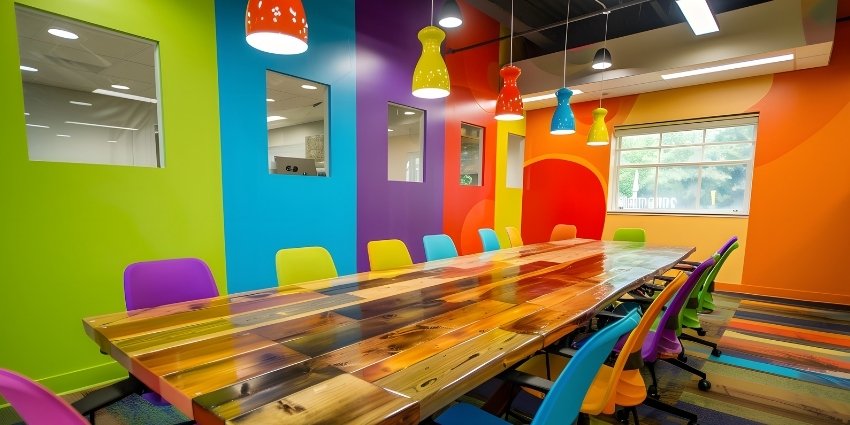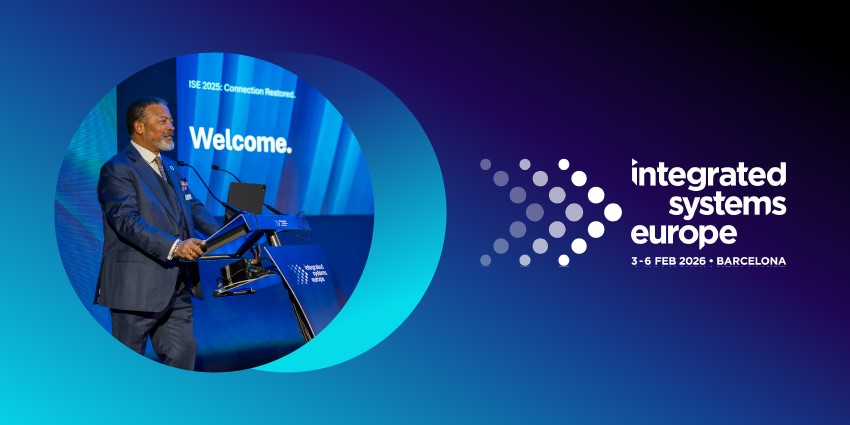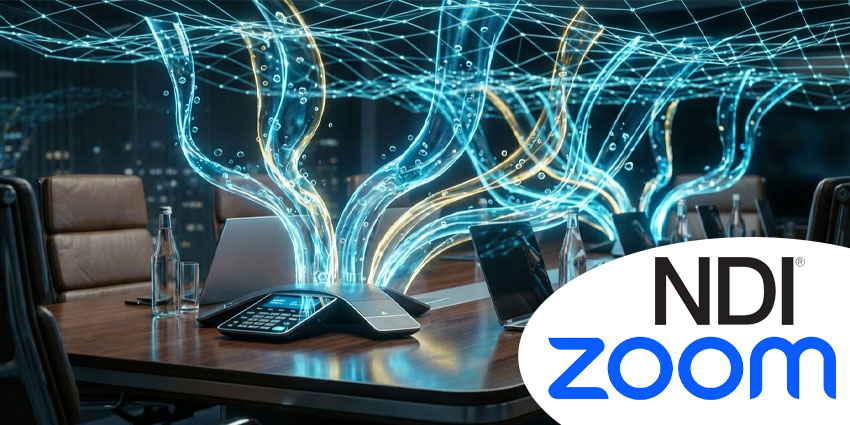As someone who’s spent countless hours in frustrating meeting rooms where technology failed at the worst possible moments, I’m genuinely excited about what I witnessed at InfoComm this year. If you’re an IT leader tired of managing complex AV systems while your users demand seamless, intelligent experiences, this transformation is about to change everything.
The meeting room is undergoing its most significant evolution since the introduction of video conferencing. At InfoComm 2025, I had the opportunity to experience firsthand how artificial intelligence is reshaping these spaces from simple communication hubs into intelligent productivity launchpads that could fundamentally change how we work.
Beyond the Buzzwords: Real AI in Action
Ryan Herbst, Chief Strategist at Unified Communications, recently demonstrated what the future of meeting rooms actually looks like. His team’s AI framework showcased capabilities that felt more like science fiction than current reality—yet they’re achievable today.
“When you take real programmers, real developers, and point them at AV problems, you come up with very different solutions than traditional AV programming.”
“We’re redefining what a meeting room is—from a place you go to meet locally or connect to remote people, to a much more dynamic space with access to corporate data and information.”
— Ryan Herbst, Chief Strategist, Unified Communications
The demonstration included voice-controlled room management that could automatically adjust lighting based on camera detection, reconfigure audio setups when furniture was moved, and guide users through complex room operations without touching a single button. But this was just the beginning.

Solving Real Problems for Real People
The technology addresses challenges that plague both end users and IT professionals daily. For users, it eliminates the frustration of walking into a meeting room and not knowing how to cast wirelessly, access advanced features, or troubleshoot basic issues. The AI acts as an intelligent concierge, understanding natural language queries and providing step-by-step guidance. UnifiedCommunications is releasing their first AI-Framework product, Meeting Room Assistant, an Azure based AI agent that guides users through how to use and get support for rooms next month.
“There’s a huge opportunity to make these spaces easier.”
Herbst noted. “Even with something as simple as Teams rooms, the basics are easy, but there are tons of features that most people don’t know about. The idea that you can say ‘how do I cast wirelessly in this room?’ and get an immediate, helpful response changes everything.”
The New Reality: Every Room Needs Intelligence
The implications extend far beyond convenience. As AI-powered features become standard in some meeting rooms, user expectations shift dramatically. Herbst highlighted a critical challenge: “You start a pilot around Copilot, everybody begins to love that experience and becomes dependent on AI recaps. Then somebody walks into a meeting room with people who aren’t in the room, and that recap becomes useless because it’s saying ‘conference room 7 said this, conference room 7 said yes.'”
This speaker attribution problem represents just one example of how AI capabilities in some spaces create expectations for all spaces. Organizations are discovering they can’t have inconsistent experiences across their meeting room portfolio.
Microsoft has responded by making speaker attribution capabilities default settings, recognizing this as foundational for AI systems to provide valuable downstream outputs. The quality bar for audio has also risen significantly—what once needed to be merely “intelligible” for human ears now must be precise enough for accurate AI transcription and analysis.
The Economics of Intelligent Spaces
The financial model for deploying AI-powered meeting rooms is more favorable than ever. Hardware costs have decreased while complexity has reduced, making self-installation viable for many organizations. Herbst’s team offers “express installations” where pre-staged hardware on stands can be rolled out quickly without traditional AV integration expertise.
“We have hardware that comes out-of-the-box for spaces that you never could do in the past,” he explained. “The surface area of physical challenges has reduced, but now we need intelligent devices in all kinds of spaces, not just boardrooms.”
However, getting it wrong carries significant consequences. Organizations that delay adoption risk becoming uncompetitive as AI-augmented workplaces become the norm. The productivity gains from automatic meeting notes, transcripts, and actionable follow-ups create competitive advantages that are difficult to ignore.
“I think the whole challenge of putting your head in the sand and just saying we’re ignoring all of this stuff is that you end up just really uncompetitive because this is super efficient stuff—to be able to walk in and get all of our meeting notes and transcripts automatically and all of the outputs that come from these great AI driven inputs.”
— Ryan Herbst
Looking Ahead: Meetings as Productivity Engines
The future Herbst envisions moves far beyond today’s meeting experiences. By 2030, he predicts meetings will become genuine productivity engines rather than discussion forums that require separate follow-up actions.
“The fundamental idea that we sit down, have a conversation, then figure out what to do next is changing. The ‘what to do next’ part will automatically be there for us. We’re talking about wildly different levels of efficiency and capability.”
— Ryan Herbst
Future meeting rooms will provide real-time access to corporate data, automatically surface relevant information during discussions, and immediately translate decisions into actionable tasks. The AI facilitator won’t just take notes—it will initiate workflows, schedule follow-ups, and connect conversations to broader organizational systems.
“It’s going to feel so much better because that’s some of the biggest frustration about our meetings today—we sit and we talk and nothing happens. We talk about the same thing or we’re remembering what did we talk about the last time. All of that should disappear and we should be able to have the technology help us do what we’ve all just kind of dreamed about as it relates to meetings.”
The Strategic Imperative
For organizations evaluating their meeting room strategy, the message is clear: this transformation isn’t optional. AI-augmented meeting spaces will become as essential as reliable internet connectivity. The question isn’t whether to adopt these capabilities, but how quickly and strategically to implement them.
Microsoft’s approach to partner programs reflects this urgency. The company is providing unprecedented flexibility and funding for qualified organizations to accelerate their AI journey, while holding partners more accountable for measurable outcomes. This shift from prescriptive implementations to results-driven partnerships signals the strategic importance Microsoft places on successful AI adoption.
The Bottom Line
The meeting room revolution represents more than technological advancement—it’s a fundamental shift in how we think about collaboration spaces. Organizations that embrace AI-powered meeting environments will find themselves with more productive teams, better decision-making processes, and competitive advantages that compound over time.
For IT leaders managing meeting room portfolios, the path forward requires balancing immediate needs with future capabilities. Start with speaker attribution and high-quality audio capture, ensure security frameworks can support AI integrations, and prepare for scale by thinking beyond traditional boardrooms to include every space where people convene.
The meeting rooms of tomorrow won’t just connect us—they’ll make us smarter, more productive, and more capable of turning conversations into real business impact. Are you ready to transform your organization’s collaboration spaces into intelligent productivity engines?
The future of work is being built one meeting room at a time. The question is whether your organization will lead this transformation or be left behind by it.
Ready to stay ahead of the collaboration revolution? Join thousands of IT leaders, technology buyers, and UC professionals in our vibrant UC Today LinkedIn community where we share the latest insights, connect with industry pioneers like Ryan Herbst, and debate the technologies shaping tomorrow’s workplace.
Don’t miss a single breakthrough—subscribe to our newsletter and get exclusive analysis, vendor updates, and expert interviews delivered straight to your inbox. Because in the fast-moving world of unified communications, staying informed isn’t just helpful—it’s essential for staying competitive.







